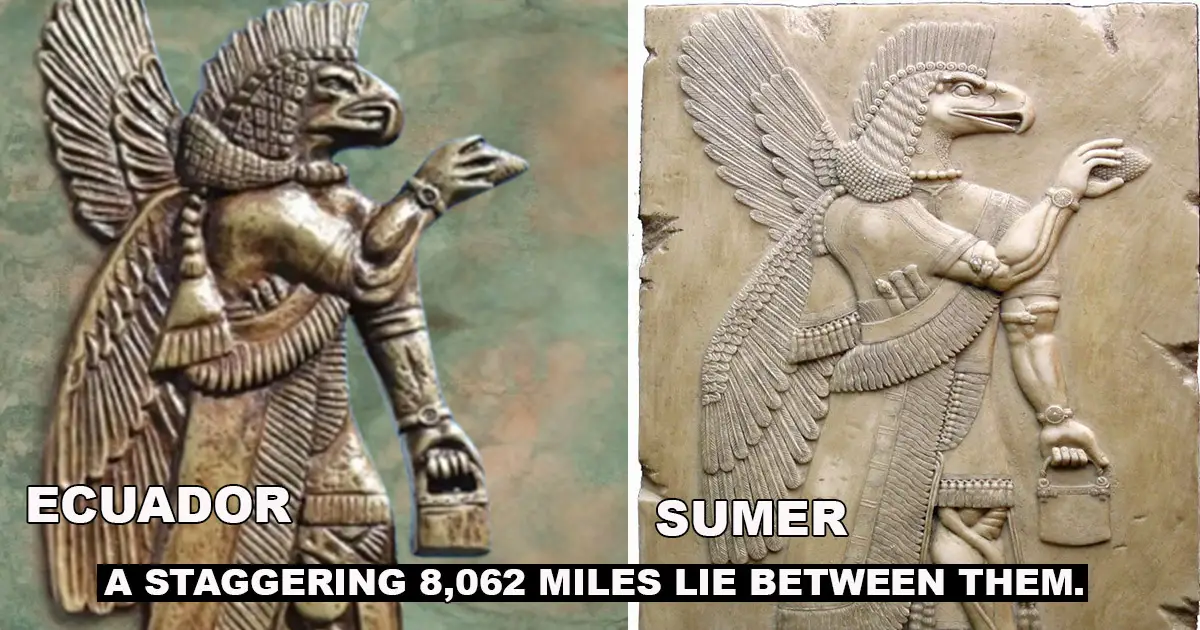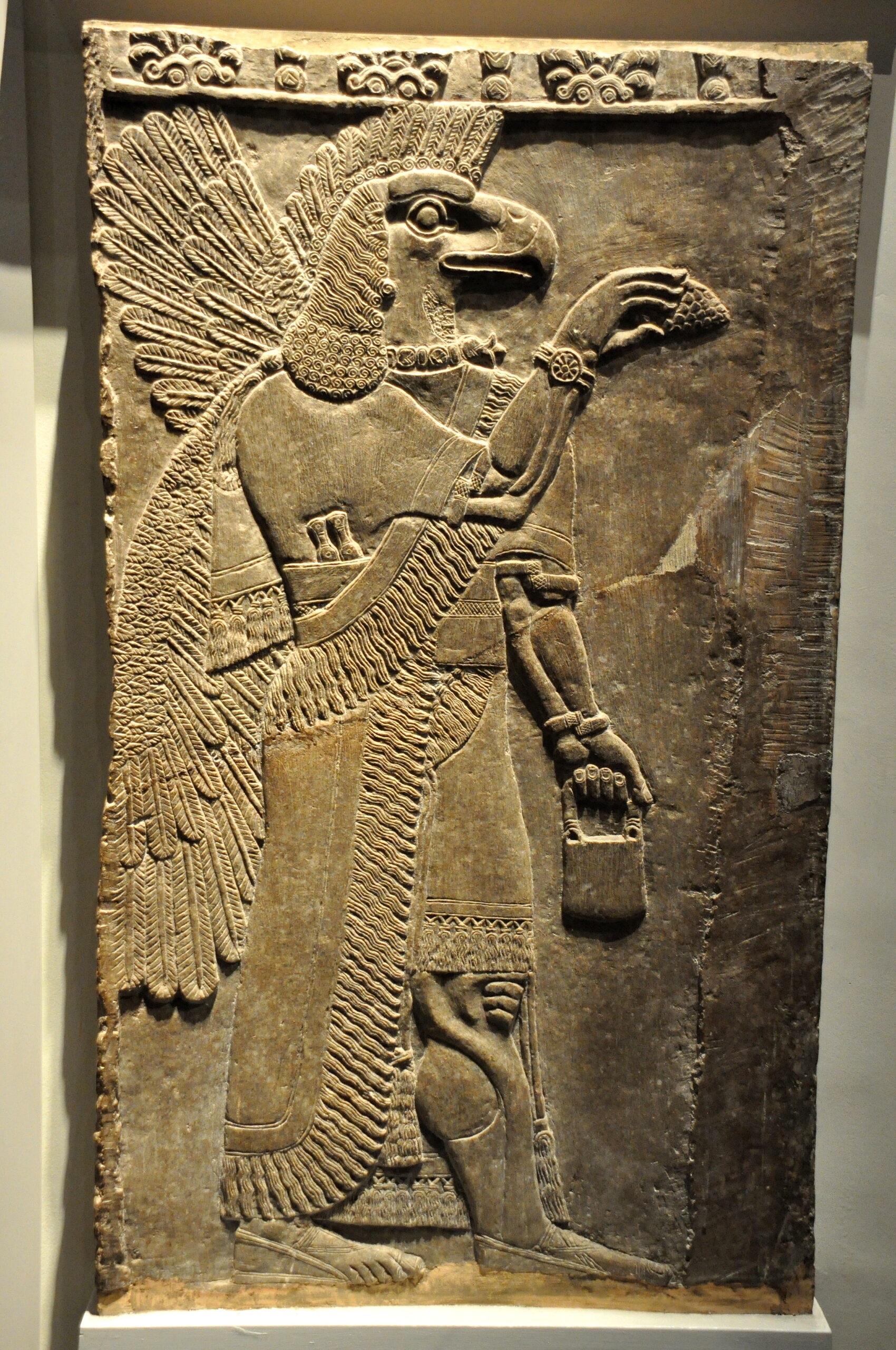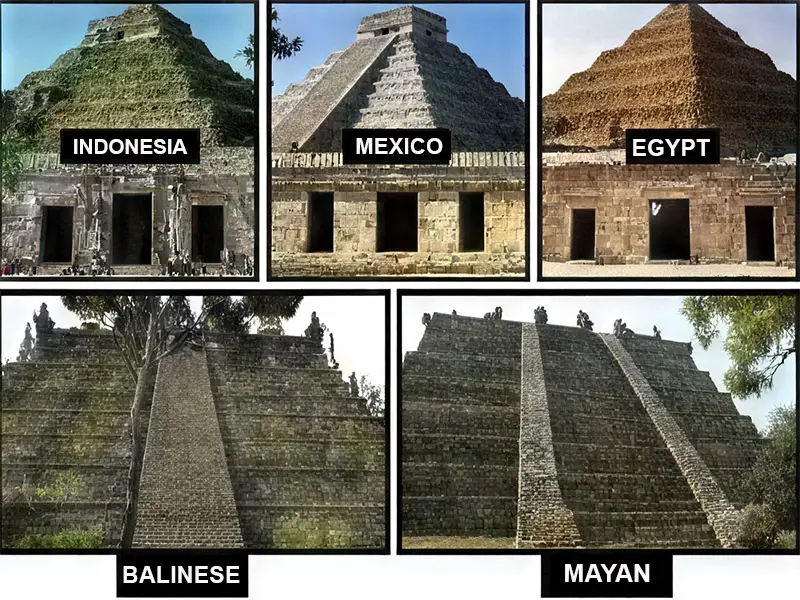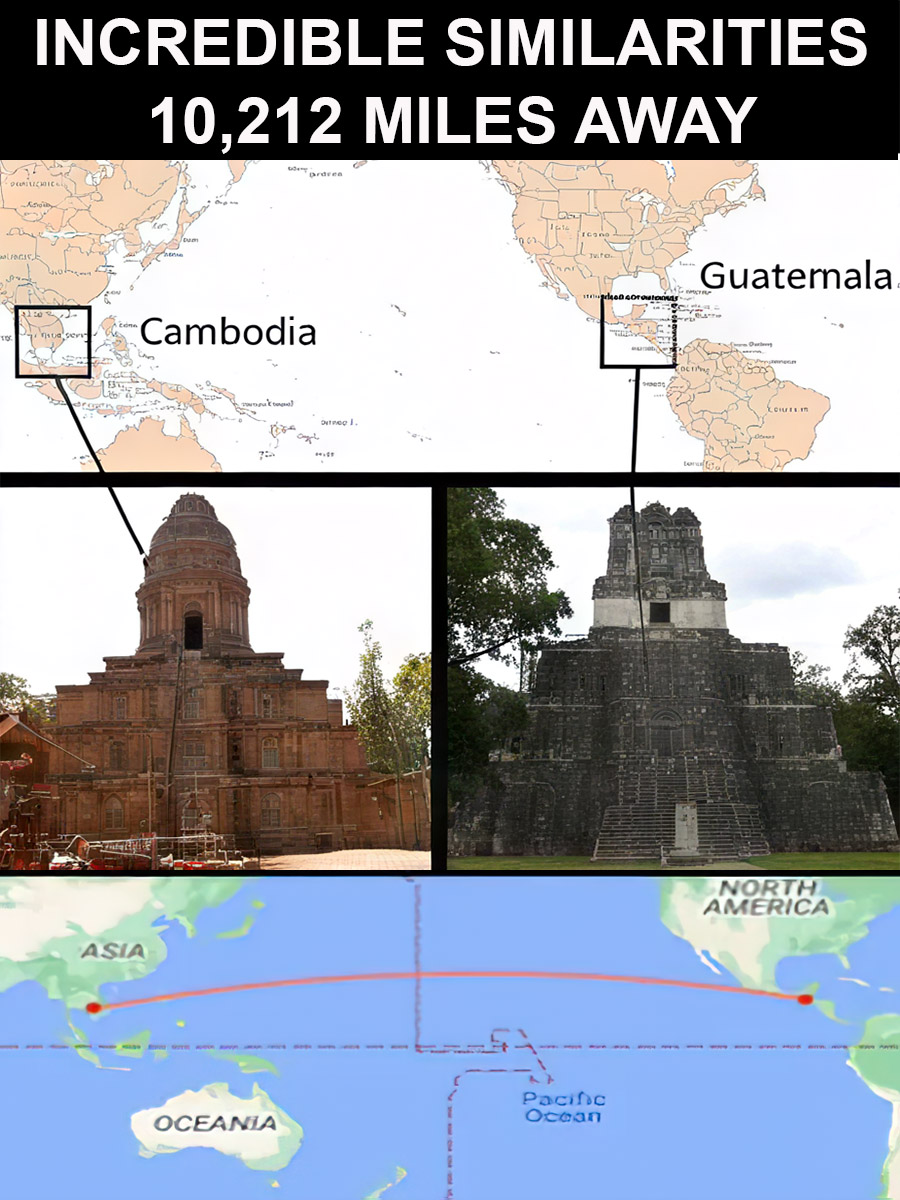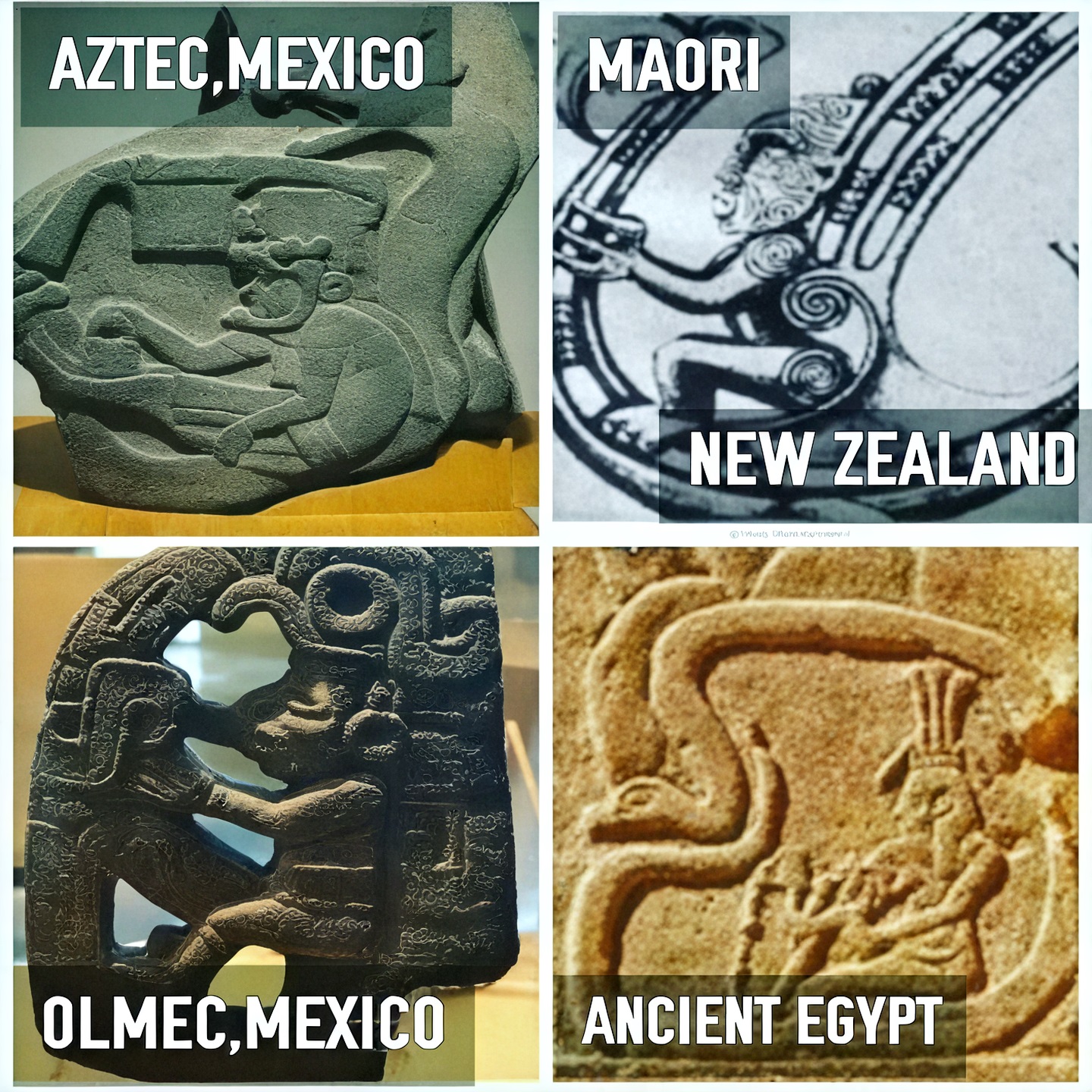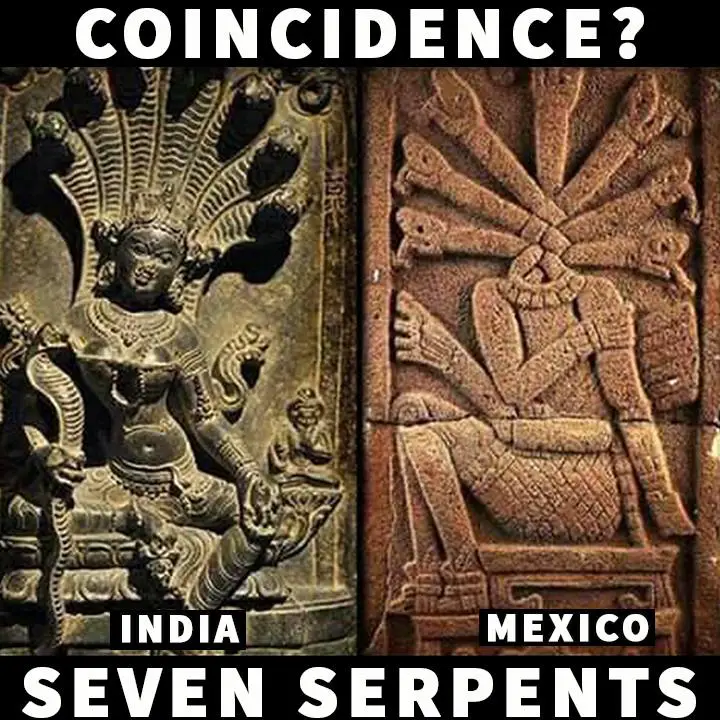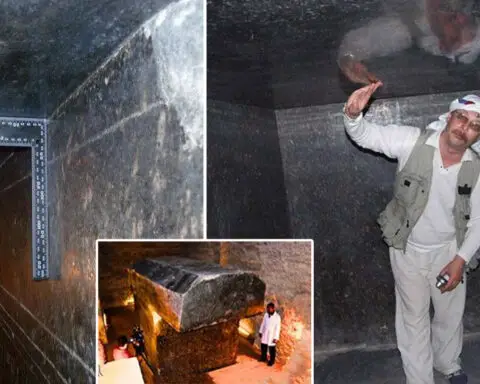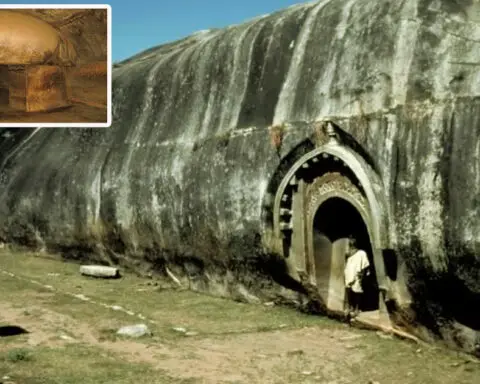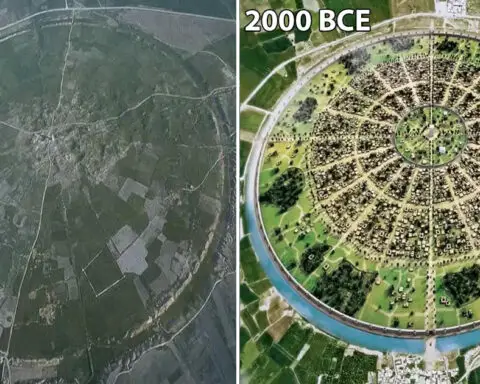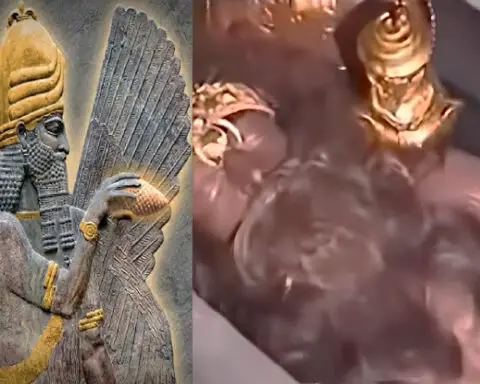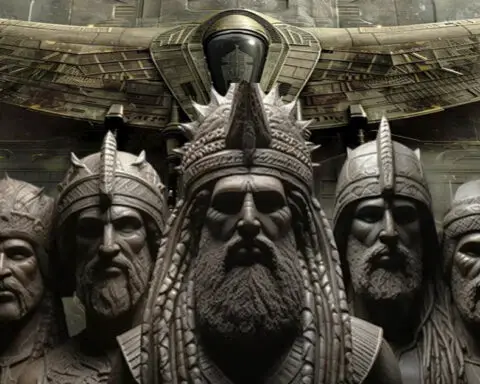In the shadows of history, a story untold whispers through the remnants of ancient civilizations, hinting at a world far more interconnected than previously imagined. This narrative, woven from the enigmatic echoes of artifacts and monuments scattered across the globe, suggests a profound global connection in ancient times—a concept that challenges the very fabric of our historical understanding.
Unraveling the Enigma of Cross-Continental Deities
At the heart of this mystery are two statues, continents apart yet eerily similar, representing Ninurta—a deity revered in the ancient Mesopotamian pantheon. One statue stands in the traditional lands of Mesopotamia, depicting Ninurta as the formidable god of war and agriculture. Another, found in a collection far across the ocean in South America, mirrors the Mesopotamian depiction with uncanny precision. This startling similarity raises a question that burns through the annals of history: How could two distinct cultures, separated by vast oceans, share such a detailed portrayal of the same deity?
This striking correlation is not a solitary case but part of a broader tapestry that suggests a global connection in ancient times. Such connections imply a shared cultural and perhaps even spiritual heritage that spans across continents, challenging the conventional narrative of isolated civilizations evolving independently.
The Architectural Wonders: A Global Connection in Ancient Times
Beyond the statues of Ninurta lies another compelling piece of evidence for ancient global interconnectedness: the pyramids. From the sandy stretches of Egypt to the lush landscapes of Mexico and the mystical terrains of Indonesia, these monumental structures rise, echoing a common architectural language that defies simple explanation. The Great Pyramid of Giza, the Borobudur Temple, and the Pyramid of the Sun in Teotihuacan, though rooted in distinct cultures, share geometrical precision and design philosophies that suggest a deeper, interconnected understanding of architecture and cosmology.
This global distribution of pyramid-like structures, often serving as tombs, temples, and celestial observatories, points to a shared knowledge or influence that transcended geographical barriers. Could it be that these architectural marvels were the product of a singular global civilization, or did ancient travelers share their knowledge across the seas, contributing to a shared architectural vision?
The Lore of World-Traveling Deities: Bridging Civilizations
The idea of world-traveling deities, such as Ninurta, appearing in both Mesopotamian and South American cultures, invites speculation about a prehistoric period of global exploration and cultural exchange. This theory posits that ancient civilizations were not merely isolated entities but were part of a larger, interconnected world. Such connections could have facilitated the exchange of religious beliefs, leading to the diffusion of deity representations across vast distances.
The notion of a primordial global civilization, often shrouded in legends of Atlantis or Mu, emerges as a tantalizing hypothesis. This civilization, possibly possessing advanced navigational, architectural, and cultural knowledge, might have seeded the early development of distinct cultures with a common heritage. The similarities in deity worship and architectural achievements could be remnants of this ancient global civilization’s influence.
Deciphering the Ancient Code: Symbols of Unity
Amidst these mysteries, the recurring symbolism found in ancient art and monuments offers clues to a possible global language of symbols. Serpents, suns, and celestial alignments feature prominently in diverse cultures, from the feathered serpent deities of Mesoamerica to the serpent symbols in Asian and African traditions. These shared motifs might have served as a universal language, bridging cultures through common themes of knowledge, wisdom, and the cosmos.
Astronomical alignments and megalithic structures, designed to mark celestial events, underscore a universal fascination with the stars and their cycles. This shared astronomical knowledge speaks to a profound understanding of the cosmos, suggesting that ancient civilizations were not only aware of each other but also shared a common quest for celestial wisdom.
Conclusion: A Tapestry of Ancient Connections
The global connection in ancient times, as suggested by the parallel depictions of Ninurta and the widespread presence of pyramid structures, invites us to rethink the isolated narrative of ancient civilizations. These connections hint at a world where knowledge, culture, and spirituality were exchanged across continents, shaping the development of humanity in ways we are only beginning to understand.
The pursuit of understanding these connections opens new avenues for research and exploration, urging us to look beyond the conventional boundaries of history. As we delve deeper into the mysteries of the past, we may find that the ancient world was far more interconnected than we ever imagined, bound by a shared legacy of knowledge, art, and spirituality that transcends time and geography.
VIDEO:

